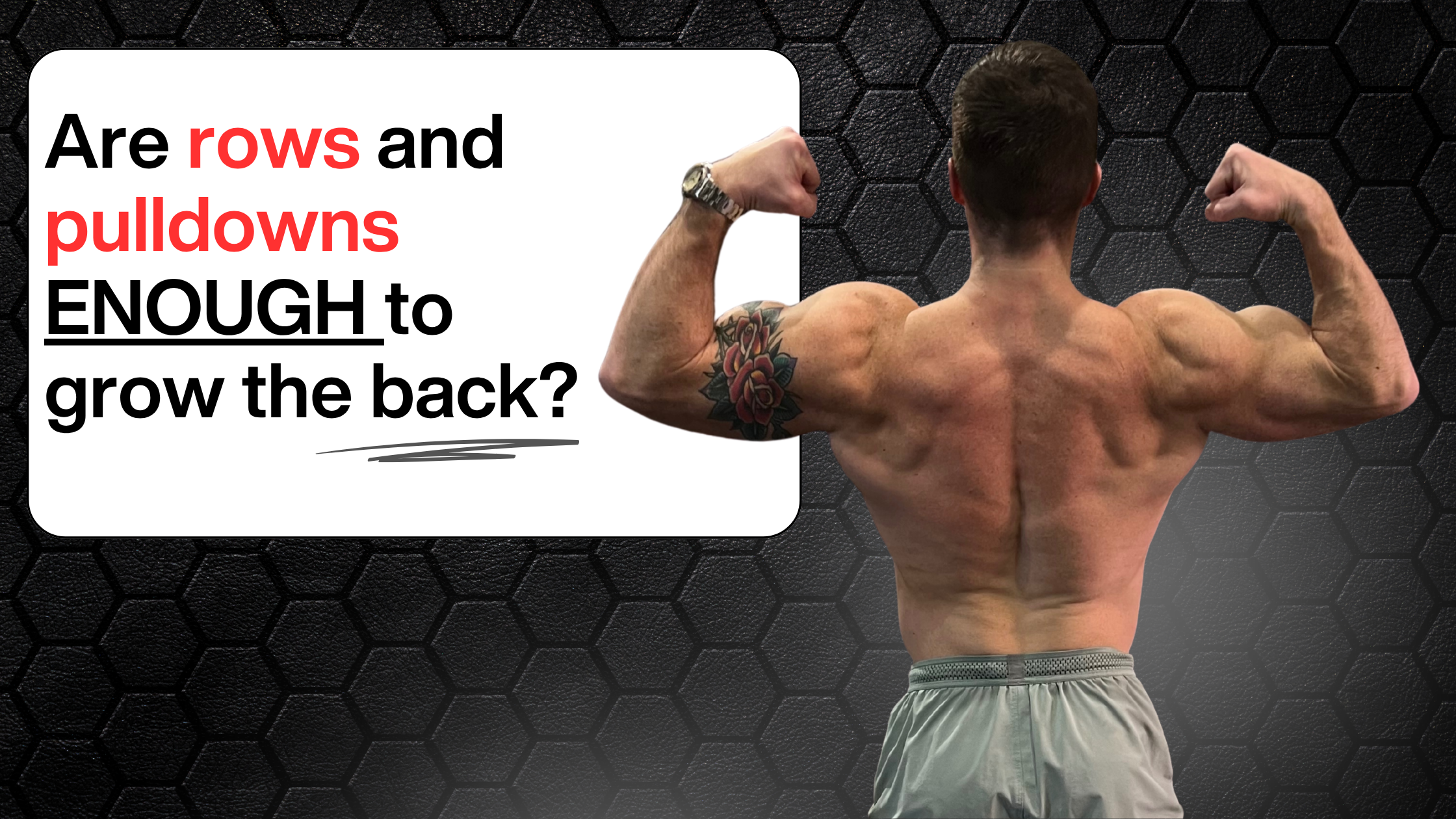Hard truths: tracking works, BCAAs don’t (here’s why)
Hey there Muscles,
Big supp companies are selling lies to everyday lifters like you, workout swaps to truly build an impressive physique, and "intuitive" eating may the reason you aren't getting results.
Enjoy the next 4 minutes and 13 seconds of supplement, diet, and workout design commentary.
P.S. If you shoot from the hip every workout, don't expect significant results. Go check out my training hub.
P.P.S. Read previous email versions here.
It works until it doesn't...
The Problem: You are stuck and want to lose weight (or gain muscle)... BUT you don't want to or don't have the time to track your diet (calories, carbs, fats, proteins).
Why it’s happening: I understand that life is hectic, I DO... but if you want above average results, you have to do above average things. Tracking may feel annoying, but the reality is it is the most effective tool we have to make significant change in our body composition.
Tracking works…period. Research shows people who consistently track their intake lose up to twice as much fat as those who don’t. One study found that regular self-monitoring led to over 9% body weight lost, compared to less than 3% in non-trackers (Burke et al., 2011).
Another showed people underreport their calories by up to 47% when eating intuitively (Lichtman et al., 1992). If you want real results, tracking is the most effective tool — the data proves it.
I am not saying you need to track all the time, but failure to peak behind the curtain of your diet and eating habits is like saying you want to become a millionaire without looking at how much you make, what your monthly expenses are, how much you can invest, and what investments can great a well balanced and long-term strategy to build wealth... Diet and weight loss/muscle gain are not that much different in regards to being very systematic and data driven.
The Fix: When I get clients who don't want to track but want to lose weight, I first preface it by letting them know they want me as a coach to offer them a less than effective strategy for optimal results. Once we are clear that those constraints are not ideal, I then tell them topical things like eat lean protein, fruits, vegetables, eat until you are 80-90% full, and drink water (everything everyone knows already). I say that (and write this) because I feel strongly that WITHOUT tracking foods and really getting a clear view of not only what you are eating but how many calories, fats, carbs, and protein (and from what sources they are coming from), we are doing low effort work expecting significant results...
Take 2 weeks and commit, and track everything. With that much I am then able to see trends, behaviors, what foods you gravitate towards, what things we need to swap, and then can give a science-based solution, (rather than guessing.. which is you know me I do not like doing things half-ass...).
My two favorite apps for tracking are MacroFactor (great for beginners and even advanced trackers) and RP Diet App (amazing app IF you are someone who is methodical and can track and eat according to an exact plan).
Example: I have many clients who use MacroFactor app with great success, and many of these same clients tell me that using the app initially showed them really how little protein they ate and how many calories they really were eating. I had one client tell me that they were SHOCKED they were only eating 30g of protein a day... a day (a 210lb male). I had another client tell me that tracking their diet helped them look deeper into why they were always feeling hungry despite eating frequently... it was because they were eating low quality calories (high in fat, sugar, and low in protein and carbs). These are also not beginners.. some of these clients were lifters who I have worked with for years who finally decided to get on the tracking train.
Every Does Them... But Few Have a Strong, Muscular Back...
The Problem: Despite training rows and pulldowns, two staples to any good back program, you still lack the size, strength, and shape you desire from your back.
Why it’s happening: Both rows and pulldowns are key part oof the back training library as they target the muscle fibers from two angles (horizontal pulling from rows, and vertical pulling from pulldowns). While these are two necessary patterns (good job), you are missing out on developing the other muscles of the back like the traps, lower traps, rear deltoids, and erectors. Without hitting these movements, you will not only lack COMPLETE back development (great for getting stronger, building more muscle, and having better injury resilience) but also leaving gains on the table.
Aside from not doing the right exercises to build a complete back, you are most likely under training your back for growth.
The Fix: I recommend you add the following to the plan:
Movements that train the lower traps, traps, and erectors, such as deadlifts or 45-degree back raises (with weight)
Movements that train the rear delts and traps, such as reverse flies, face pulls, or upright rows
Below is the exact workout plan I did weekly for 2 months to go all in on building a better back.
Example: Weeks 1-2 push weight or reps in the range, then week 3-6 add 1 set to every other exercise per week to increase volume over the next month:
Day 1:
Bent Over Row: 3 sets of 8-12 reps
Lat Pulldown: 3 sets of 8-12 reps
Upright Row: 3 sets of 8-12 reps
Day 2:
Conventional Deadlift: 3 sets of 6-8 reps
One Arm Dumbbell Row: 3 sets of 12-15 reps
Face Pull: 3 sets of 12-15 reps
Day 3:
Straight Arm Lat Pulldown: 3 sets of 15-20 reps
Machine Row / Chest Supported Row: 3 sets of 15-20 reps
Machine Reverse Fly: 3 sets of 12-15 reps
Looking for a program to build overall serious size and strength >>>> check this out
Most Supplements Are A Waste of Money...
The Problem: Your body is sore, you want more muscle, and IG/Facebook ads knows that...
Why it’s happening: BCAAs (branched chain amino acids) are three (out of nine essential essential AAs) of the building blocks of protein, and since protein builds muscle, the assumption is that taking BCAAs = building more muscle. It sounds logical, but without the full set of essential amino acids, the process falls short, and that’s what most ads don’t tell you.
The Fix: If you’re already eating enough protein (0.8-1.2g/lb/day) from whole foods or protein powders (which deliver all nine EAAs), BCAAs are unnecessary.
Research shows BCAAs alone don’t significantly increase muscle protein synthesis unless all essential amino acids are present. In one study, BCAAs triggered only a 22% increase in MPS, while a complete protein source like whey produced over 50% (Churchward-Venne et al., 2014). So if you’re hitting your protein goals, BCAAs likely aren’t doing anything extra.
If you are someone who struggles to hit your protein targets, I first suggest you look into protein powders (whey and casein if can, as these are COMPLETE protein powders.. so they deliver all amino acids whereas vegan ones sometimes are a miss.. and some are shockingly packed with heavy metals).
Pick up a high quality protein powder to help boost your overall protein intake, and get all the BCAAs, protein, and nutrients you need in a product that has been validated time and time again in research studies to support muscle growth and weight management.
My Favorite Whey Protein (take around workouts or first thing in the AM) - try the NAKED WHEY, 100% grass-fed whey with no fillers or sugars. Ideal for around workouts or first thing in the morning.
My Favorite Casein Protein (take before bed or when want to stay fuller longer) - NAKED CASEIN is my go to for a evening protein source or throughout the day when I want a slower digesting protein.
My Vegan Protein Powder Recommendation (as it provides a blended supp to deliver a complete amino profile) - use code DEWAR for 10% off
Example: There is really only one time I would remotely look into an amino supplement (and it would be taking EAA powders, NOT BCAAs) would be in phases where I am cutting my calories and may need to ensure I am not depleted in protein. This if course should not happen as you want to make sure you are prioritizing protein intake (whole foods and powders) in a cutting phase (often 1.0-1.2g of protein/lb/day in a calorie deficit.
Real Talk...
Everything I share here is based on my experience, education (yes, including that Ivy League master’s in Exercise Physiology), and a whole lot of time in the trenches coaching. I take pride in giving you advice that’s rooted in research and what actually works.
That said — I’m not a doctor.
This newsletter isn’t medical advice.
If you’ve got injuries, health issues, or concerns that go beyond training and nutrition, please check in with your physician before applying anything you read here.
Alright, that wraps up this week's Training Fix!
Thank you for reading and I hope you enjoyed this week's edition.
If you know a fellow lifter who needs help or would enjoy this, send them this email and have them sign up for the newsletter here.
- Mike (@mikejdewar)
P.S. Read previous email versions here
P.P.S. If you want to save more time in the gym and do programs that remove guesswork and optimize training outcomes, check out my training hub



